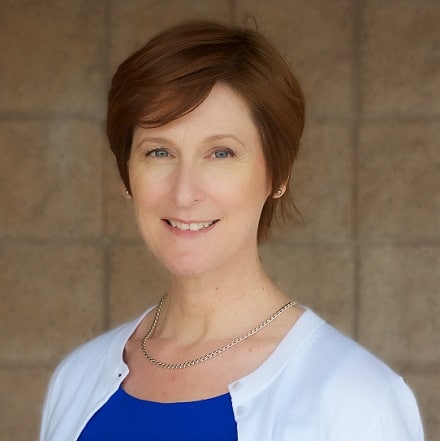Inside Angle
From 3M Health Information Systems
A reimagined discussion about health equity with Bernard Tyson
At the AHIP conference last week, Bernard Tyson, CEO of Kaiser Permanente, spoke forcefully about health equity during a panel session. “We need to rethink the best way to provide and meet the healthcare needs of millions of people in our country today who can’t afford what we’re offering them,” he said. Later, he tweeted, “We have a golden opportunity to reinvent health care.”
It is a refrain I hear a lot from some of our subject matter experts at 3M: We have to rethink and reinvent health care. My colleagues are doing a lot of thinking and inventing and have some strong ideas about how to reform health care. It isn’t difficult to imagine what they might say if they were in a hypothetical panel discussion with Tyson at AHIP. In fact, if I were to cobble together a hypothetical discussion about healthcare equity, this is how it might go, based on existing media reports and blog posts. Click on the links to follow the statements to their true context and sources.
Panelist 1: Bernard J. Tyson, CEO of Kaiser Permanente
Tyson tells about a patient in the Kaiser system who couldn’t afford to pay her bill. It was thirty dollars. She called to ask if she could repay it over three months. That thirty-dollar co-payment illustrates the huge disparity between what policymakers and patients consider to be affordable healthcare. Those of us who manage health care at a macro level might be think on the scale of ten million or ten thousand. “When we talk about affordability of health care,” says Tyson, “we’re talking about everyday working people who can’t afford to pay $30, $50, $100.”
Value-based care is one way of achieving better health outcomes and a healthy life. According to Tyson, the U.S. healthcare system is moving closer to value-based care. “We understand how to better align the incentives of the entire healthcare system,” he says. “The second thing is focusing on health and the holistic person. That is clearly headed in the right direction. Lastly I would say we are beginning to focus much more on outcomes as opposed to process. Value-based care and value-based payment is much more about outcomes of care as opposed to just procedures.”
Panelist 2: Barbara DeBuono, MD, director of market development for 3M Health Information Systems
DeBuono recounts a meeting of government leaders, providers, and community advocates in St. Paul, Minnesota. They discussed how data analytics and payment incentives could shape a more inclusive healthcare system.
“Achieving equity in health requires a careful look at the whole person and the whole community, understanding multiple determinants of health and addressing them in ways that go beyond disease-specific care,” says DeBuono. “It requires an approach that also considers the support systems within the community and family that can mitigate the occurrence of potentially preventable events.”
Panelist 3: Norbert Goldfield, MD, medical director for 3M Clinical and Economic Research:
Goldfield is a practicing physician as well as a policy advisor within 3M. In his opinion, if you want to “truly improve patient lives,” health policy must “move beyond the rhetoric of patient-centered care and surveys of patient satisfaction to the use of patient-centered outcome measures.”
Specifically, Goldfield encourages policymakers to incorporate functional health measures into health risk measures. You identify interaction between functional health domains (e.g., mobility, self-care, incontinence, and cognitive impairment) with member costs and by severity of illness, types of underlying chronic conditions, and episode of illness (for bundled payment).
“The insertion of functional status into diagnosis-based risk-adjustment is therefore feasible,” says Goldfield. “It can improve equity in payment and can overcome the variable and incomplete nature of reporting functional status.”
Panelist 4: Richard Fuller, MS, economist with 3M Clinical and Economic Research
Health equity is especially a challenge outside metropolitan areas. A MedPAC proposal released last fall addressed what Fuller describes as “the seemingly intractable problem of equalizing access to health care for rural communities.” In the proposal are a number of policy options. These however, “fail to address the core cause of hospital financial duress,” says Fuller. “That is, payment policies to support hospital mission are tied to inpatient volume. . . Policymakers have not structured current hospital mission support to reward efficiency.”
The MedPAC proposal for rural hospitals “provides for fixed grant funding in support of clearly defined services,” says Fuller. “We advocate extending this approach to the full array of supplemental payments.” Fuller explains that policymakers would define the objective of supplemental payments—for example standby capacity or physician training—and base the amount of support on the real community benefit, rather than on inpatient volume.
“As importantly, such support should not be borne and determined by a single payer such as Medicare,” says Fuller. “Financing should ensure equity in paying for mission-related costs across the broad base of health system utilizers,” including individuals and private health plans.
Panelist 5: L. Gordon Moore, MD, medical director for 3M Populations and Payment Solutions
Moore argues that current payment policies discourage population health management and health equity. “At the moment, it might appear that the value is more lip service than substance,” he says. “Programs and policies with the goal of improving population health outcomes should consider bringing to bear resources adequate to the full scope of effective primary care.”
Moore makes three specific recommendations:
- “Focus more on outcomes and less on process.”
- Reduce the burden on primary care practices for data abstraction and reporting by using “lower-burden data sets to verify that a clinician is performing well—claims-based proxies, patient reported outcomes, etc.”
- Fund the work of primary care with explicit incentives to improve access, manage whole-person relationships (not just disease), provide more comprehensive services (less fragmented), and coordinate with providers across the continuum.
Concluding remarks
On my hypothetical panel, Tyson would wrap up the discussion pointing to data research and analytics as a means of rethinking health care. “New research continues to shine a light on how we can better address every citizen’s right to life, liberty and the pursuit of happiness through improving health,” he says. “If we are serious about realizing such an ambitious goal as a nation, we must let this new data guide us towards real, effective solutions. And that means we must achieve health equity, leading to the best health outcomes and the opportunity for everyone to live a long, healthy and productive life.”
My 3M colleagues and hypothetical panelists would agree.
Kristine Daynes is marketing manager for payer and regulatory markets at 3M Health Information Systems.


